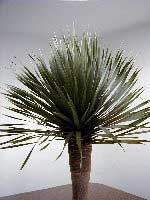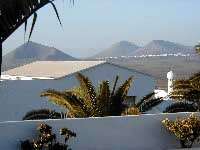|
The Canary Islands are believed to have been formed as the Atlantic ocean expanded across an oceanic 'hot spot'. This caused volcanic islands to be formed from east to west. Such that the most easterly of the islands, Lanzarote, is between 16 to 20 million years old. The central islands, such as Tenerife, are about 10 million years, while the most westerly islands of La Plama and El Hierro were formed just 2 to 3 million years ago. As a consequence of this volcanic activity the island possesses a distinctly 'alien' appearance. So much so, that the island of Lanzarote has been used for location scenes in several science fiction films, including "One Million Years BC" and "Enemy Mine". Nearly a third of the island consists of volcanic material that formed as recently as 1824, where plant life has not had an opportunity to encroach. To maintain this uniqueness, the area has been designated the Parque Nacional de Timanfaya . The entire area is relatively untouched with different views from awesome to stunning, with a range of colours that has to be seen to be believed. If you're very lucky and catch a view of the Montanas del Fuego from the south as the sun is setting you will understand why they are called the "Fire Mountains". |
|
|
|
|

|
The North of the island cliff tops provide some stunning views of the small islands north of Lanzarote. The largest of which is La Graciosa. The best views can be obtained from Mirador del Río with its' two large panorama windows and external viewing areas. Further south of this area are a number of cave complexes formed by tunnels of molten rock flowing out to the sea. The exotic plants on the left are from one of these, namely, Jameos del Argua. The palm tree was photographed at night after one of the many evening concerts held in a specially hollowed out tunnel where the volcanic lava provides excellent acoustics. The latter two tourist sites boast some stunning architecture designed by the islands resident artist (now deceased), César Manrique. |














